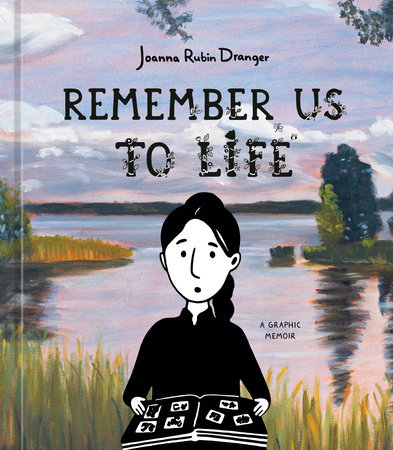Joanna Rubin Dranger. Remember Us to Life. A Graphic Memoir. Berkeley, CA: Ten Speed Press, 2025. 432 pp. US $40.00 (Hardcover). ISBN: 978-0-5938-3690-3. https://www.penguinrandomhouse.com/books/769055/remember-us-to-life-by-joanna-rubin-dranger/
Remember Us to Life is an amalgamation of the history of the Holocaust and the lived experiences of Jews. Originally published in Swedish, the story follows the history of Dranger’s extended family, focusing on her grandparents, who lost family members to the concentration camps in Germany and Norway. The medium she uses to represent these stories applies the aid of a monochrome, black and white narrative, which is supported by the scattered use of color. The color is visible, when she uses original photographs, old handwritten memorabilia, and documents to emphasize the harrowing memories.
Throughout the book, Dranger is searching for a past that seems to be lost, or as she realizes, is too painful to remember. Her art shines through the story as her frameless pages, which intermingle with the stories, memories, and narratives, bring together the thematic of the memoir. She jumps between the present and the past, but, at the same time, she puts herself in the position of the survivors and imagines how different the experience would be. The story she narrates is specific to her family, but the way she presents it, is a story of every Jew during the years between 1935-1945. Her approach is multi-faceted, with the use of graphic illustrations, family photographs, and painting. Dranger attempts to construct the history of the lost family, but keeps her Swedish positionality as the focal point. Through the course of the memoir, she is seen critiquing Sweden’s role during World War II. The title itself envelopes the theme of the memoir, which is to never forget any of the lives that were lost during the Holocaust and to remember the atrocities vetted out on them.
Winner of the Nordic Council Literature Prize in 2023, Remember Us to Life became the first graphic novel to receive this honor, exemplifying the strength of graphic storytelling. Dranger’s genre-defining memoir highlights the silences of the Holocaust through the family’s lens. The memoir uncovers the narratives of her extended family, who moved or escaped to different parts of the world, and the connections they had with their familial roots. This book becomes a beacon of light through the collective amnesia about the Holocaust and the loss of family. Her strong personal research, her attempt to find out long-lost relatives, is not just for writing her memoir, but is also about giving the deceased family members a name and making sure they are never forgotten.






